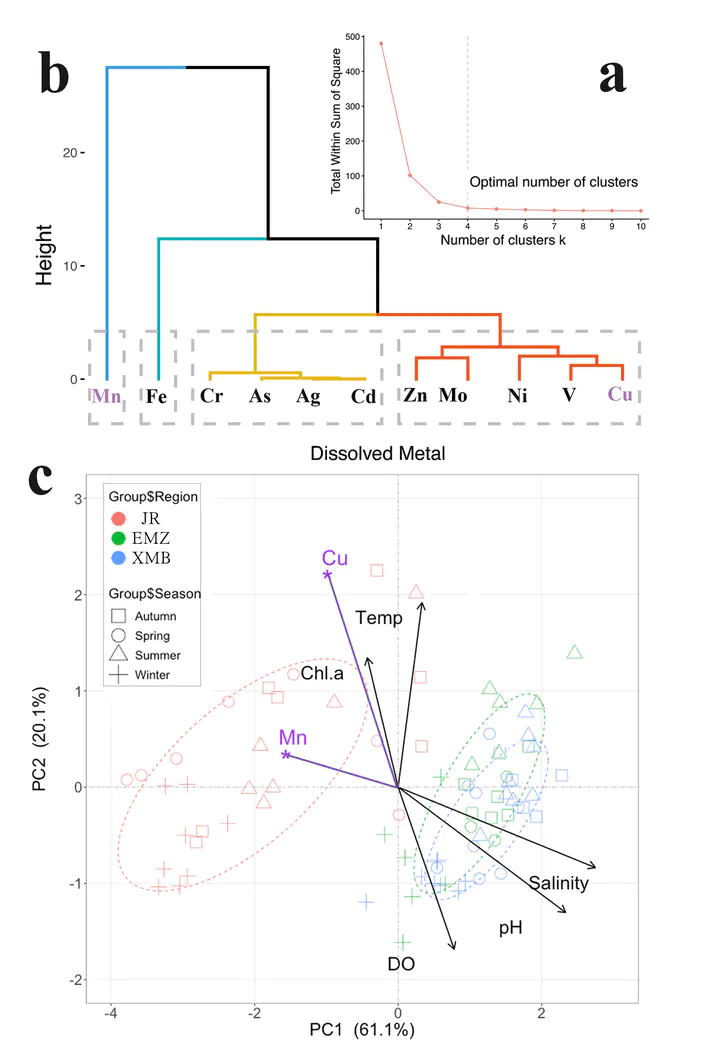10. Dynamics and geochemical responses of dissolved metals (Mn and Cu) in a subtropical estuary, China
 Graph Abstract
Graph Abstract
Abstract
The research delved into the occurrence and dynamics of dissolved metals, specifically manganese (Mn) and copper (Cu), within the Jiulong River Estuary, South China, a medium-sized subtropical estuary. Our findings unveiled a nuanced seasonal and spatial variability of dissolved metals throughout the entire estuarine system. Notably, dissolved Mn concentrations peaked (~ 3.5 μM) in the upper estuary, diminishing sharply along the salinity gradient, with a modest rise in the middle estuary and outer Xiamen Bay. In the upper estuary, heightened concentrations of dissolved Mn occurred in spring due to augmented terrestrial particle inputs, followed by suboxically reductive releases; conversely, concentrations were low in summer, attributed to dilution from increased freshwater discharges and particle scavenging. In contrast, dissolved Cu exhibited differently, with elevated concentrations (29.2–37.5 nM) in the upper and middle estuaries, driven by reductive dissolution of Mn particles and chloride-induced ion exchanges, respectively. Concurrently, heightened inputs of nutrients and metals correlated with elevated phytoplankton productivity (indicated by chlorophyll a) in the upper and outer estuary regions. Our analysis underscored the sensitivity of dissolved metals to environmental parameters, including temperature, pH, and dissolved oxygen. The integration of compiled historical data underscored the dynamic nature of dissolved metals, particularly Cu, in response to geochemical processes.The elevated ion levels indicated intensified ion releases from particles and sediments, attributable to increased anthropogenic perturbation and climatic changes (e. g. ocean warming).